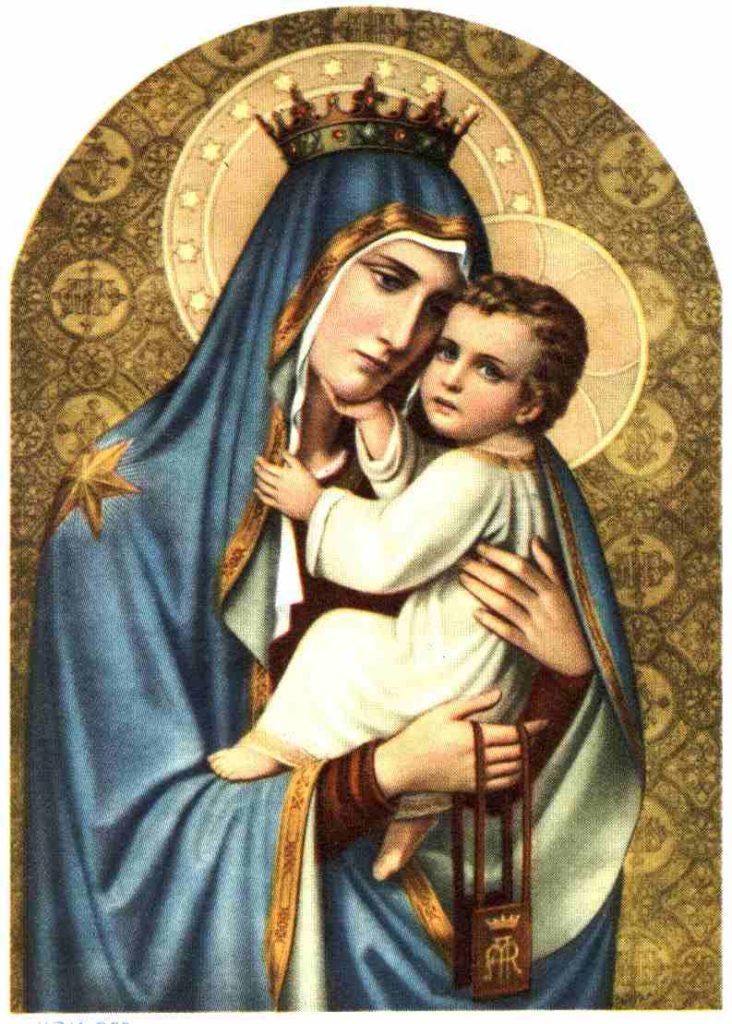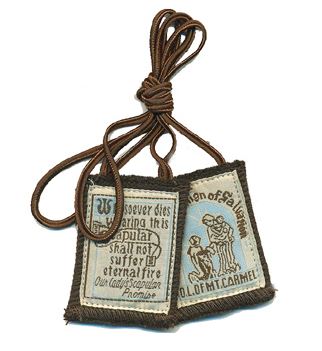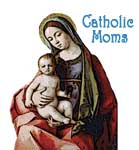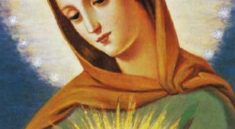THE BROWN SCAPULAR – A SIGN OF CHRISTIAN FAITH AND COMMITMENT

Our Lady of Mount Carmel and the Brown Scapular
Signs in Ordinary Human Life
Did you know, the Brown Scapular is a sign of Christian Faith and Commitment? The world in which we live is full of all types of material things which have symbolic meanings, such as light, fire, and water.
There are also, in every- day life, experiences of relationships between human beings, which express and symbolize deeper realities such as sharing a meal (as a sign of friendship), taking part in a protest march (as a sign of solidarity), joining together in a national celebration (as a sign of identity).
We need signs and symbols to help us understand what is happening at present, or what happened before, and to give us an awareness of who we are, as individuals and as groups.
Signs in Christian Life
Jesus is the great sign and gift of the Father’s love. He founded the Church as a sign and instrument of his love. Christian life also has its signs. Jesus used bread, wine, and water, to help us understand higher things, which we can neither see nor touch.
In the celebration of the Eucharist and the other sacraments (baptism confirmation, reconciliation, matrimony, orders, the sacrament of the sick) the symbols, (water, oil, the laying on of hands, the rings), all have their own meaning and bring us into communication with God, present in each of them.
As well as liturgical signs, the Church has others related to some event, to some tradition, or some person. One of these is the Brown Scapular of Our Lady of Mount Carmel.
 The Scapular is a Sign of Mary
The Scapular is a Sign of Mary
One of the signs in the tradition of the Church from many centuries ago is the Brown Scapular of Our Lady of Mount Carmel. It is a sign approved by the Church and accepted by the Carmelite Order as an external sign of love for Mary, of the trust her children have in her, and of commitment to live like her. The word scapular indicates a form of clothing which monks wore when they were working.
With the passage of time, people began to give symbolic meaning to it: the cross to be borne every day as disciples and followers of Christ. In some religious orders, such as the Carmelites, the Scapular turned into a sign of their way of life. The Scapular came to symbolize the special dedication of Carmelites to Mary, the Mother of God, and to express trust in her motherly protection as well as the desire to be like her in her commitment to Christ and to others. Thus it became a sign of Mary.
The Carmelite Scapular
| IS NOT: | IT IS: |
|
|
This Brown Scapular of Our Lady of Mt Carmel is available at the Saints Market Catholic Store: Click to View…
Some Practical Rules
-
- People are enrolled in the scapular only once in their life. This is done by a Priest or an authorized person.
- When you replace your scapular, you do not have to be enrolled again. You should, however, get it blessed by a Priest just like you would normally do with a sacramental.
- The scapular can be replaced afterwards by a medal which has on one side the image of the Sacred Heart of Jesus and on the other, the image of Mary.
- Kiss your scapular daily. Pope Benedict XV, granted 500 days indulgence for devoutly kissing your scapular.
-
- The scapular holds us to live as authentic Christians in line with the teaching of the Gospel, to receive the sacraments, to profess our special devotion to the blessed Virgin, which should be expressed each day, at least, by saying the Hail Mary three times.
Pope John Paul II and the Brown Scapular
Pope Reveals He Wears a Carmelite Scapular – Sends Letter to Mark a 750th Anniversary
VATICAN CITY, MAR. 27, 2001 (Zenit.org).- John Paul II wrote a letter for the 750th anniversary of the reception of the scapular by the Carmelite order, in which he reveals that he has worn a smaller version of the scapular since his youth. The scapular was received by Carmelite Superior General Simon Stock in 1251. The Virgin Mary appeared to him and assured the eternal salvation of all those who wear the scapular with devotion.
The Holy Father sent a letter to the generals of the two Carmelite branches: Father Joseph Chalmers, of the old, or “shod,” branch, and Father Camilo Maccise, of the discalced branch (reformed by St. Teresa and St. John of the Cross). The Pope reminded the Carmelites that in his apostolic letter “Novo Millennio Ineunte,” he entrusted the third millennium to Mary.
John Paul II wrote, “I have learned that the Carmelite order, in its two branches, the old and the reformed, wishes to express its own filial love to its Patroness, dedicating the year 2001 to her, invoked as the Flower of Carmel, Mother and Guide in the Path to Holiness.
“This Marian devotion, expressed “in the humble sign of the scapular, consists in the consecration to her Immaculate Heart,” he stressed.
Popular scapulars consist of two small squares of woolen cloth joined by strings and worn around the neck. The original, large scapulars worn by some religious orders came to symbolize the cross and yoke of Christ.
In his letter, the Holy Father made a personal revelation: “I, too, have carried the Carmel scapular over my heart for a long time!”
When he was a university student in Krakow, Poland, before entering the seminary, Karol Wojtyla considered entering the Carmelite order, after reading St. John of the Cross’ works. The latter’s mystical writings so fascinated Wojtyla, that he based his doctoral thesis on them.
Copyright© CatholicMoms.com 2002. Parts of this page courtesy of http://www.ocd.pcn.net





